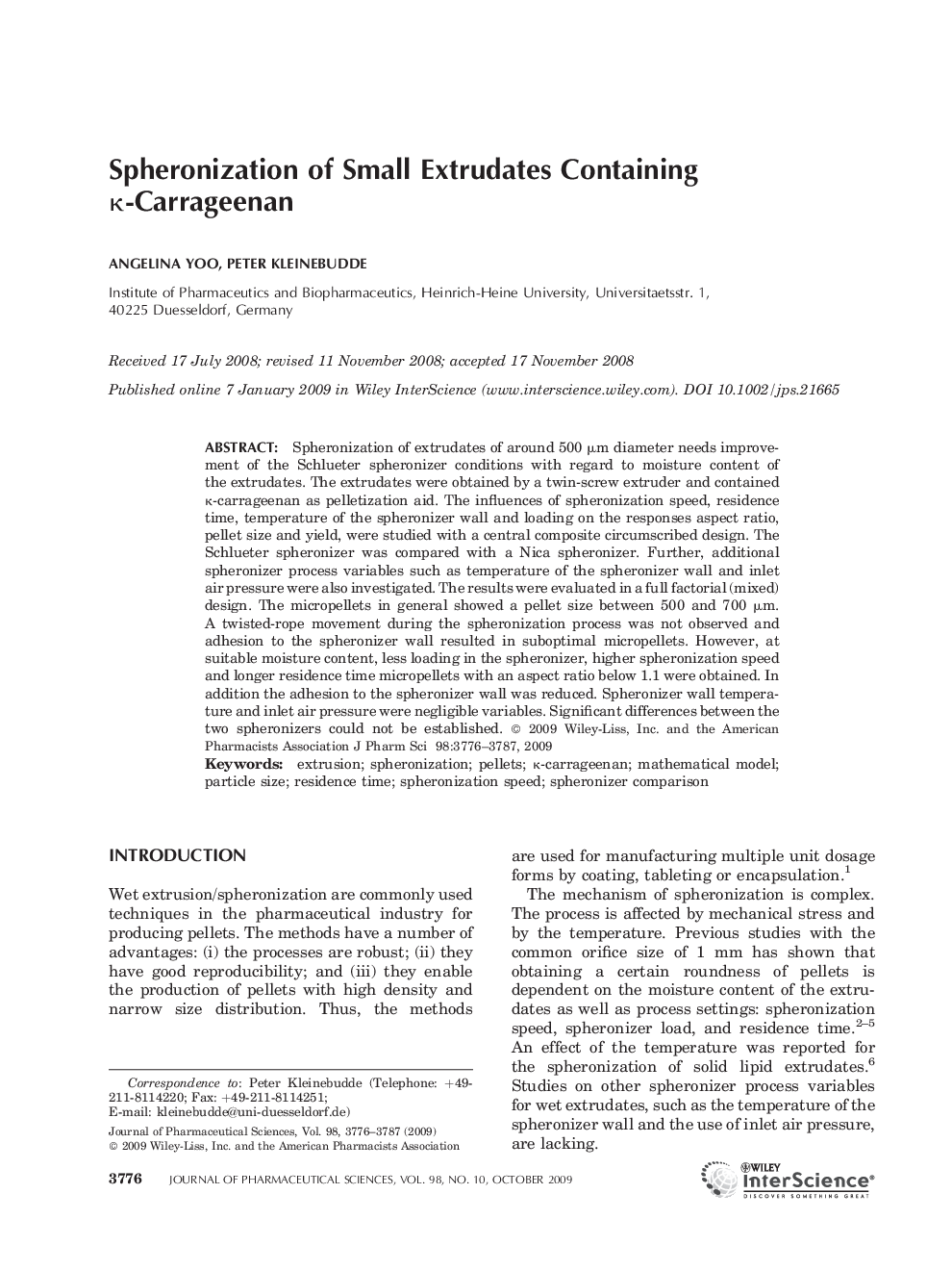| Article ID | Journal | Published Year | Pages | File Type |
|---|---|---|---|---|
| 2486397 | Journal of Pharmaceutical Sciences | 2009 | 12 Pages |
Abstract
Spheronization of extrudates of around 500 µm diameter needs improvement of the Schlueter spheronizer conditions with regard to moisture content of the extrudates. The extrudates were obtained by a twin-screw extruder and contained κ-carrageenan as pelletization aid. The influences of spheronization speed, residence time, temperature of the spheronizer wall and loading on the responses aspect ratio, pellet size and yield, were studied with a central composite circumscribed design. The Schlueter spheronizer was compared with a Nica spheronizer. Further, additional spheronizer process variables such as temperature of the spheronizer wall and inlet air pressure were also investigated. The results were evaluated in a full factorial (mixed) design. The micropellets in general showed a pellet size between 500 and 700 µm. A twisted-rope movement during the spheronization process was not observed and adhesion to the spheronizer wall resulted in suboptimal micropellets. However, at suitable moisture content, less loading in the spheronizer, higher spheronization speed and longer residence time micropellets with an aspect ratio below 1.1 were obtained. In addition the adhesion to the spheronizer wall was reduced. Spheronizer wall temperature and inlet air pressure were negligible variables. Significant differences between the two spheronizers could not be established. © 2008 Wiley-Liss, Inc. and the American Pharmacists Association J Pharm Sci 98:3776-3787, 2009
Related Topics
Health Sciences
Pharmacology, Toxicology and Pharmaceutical Science
Drug Discovery
Authors
Angelina Yoo, Peter Kleinebudde,
